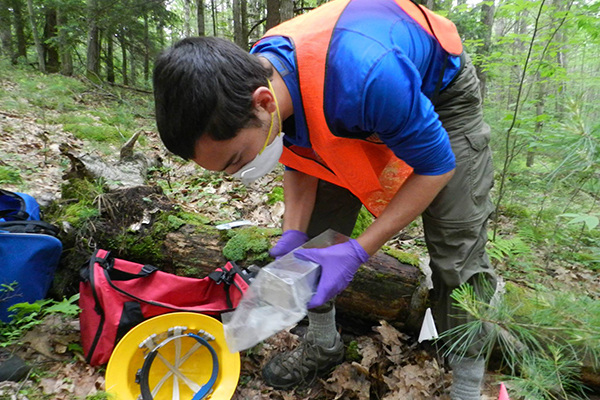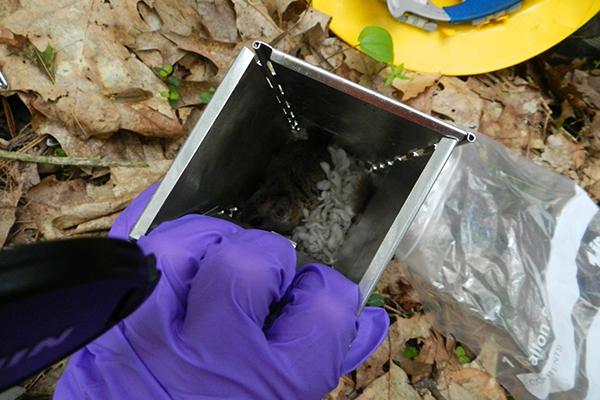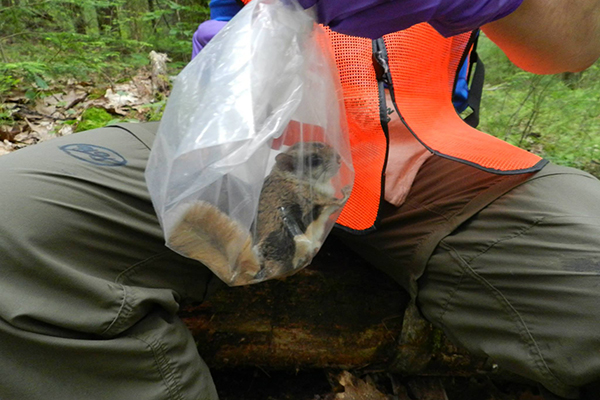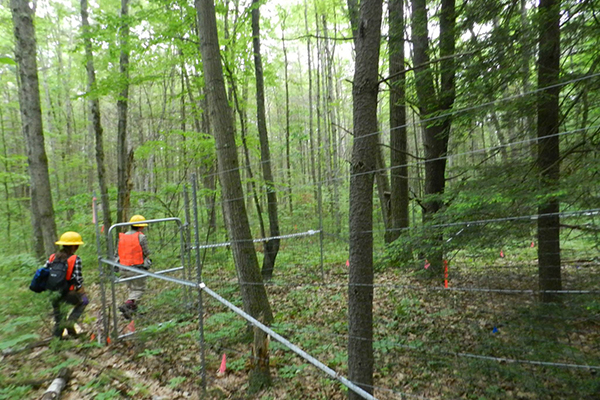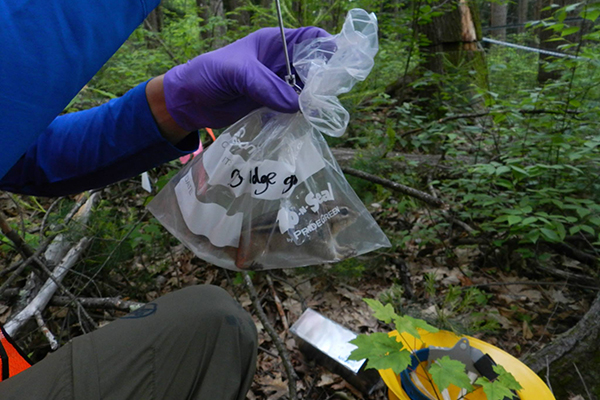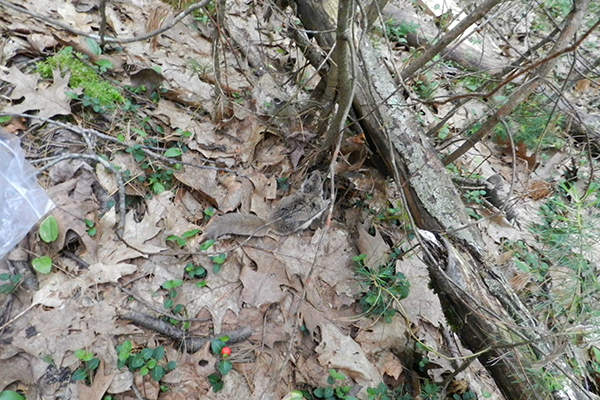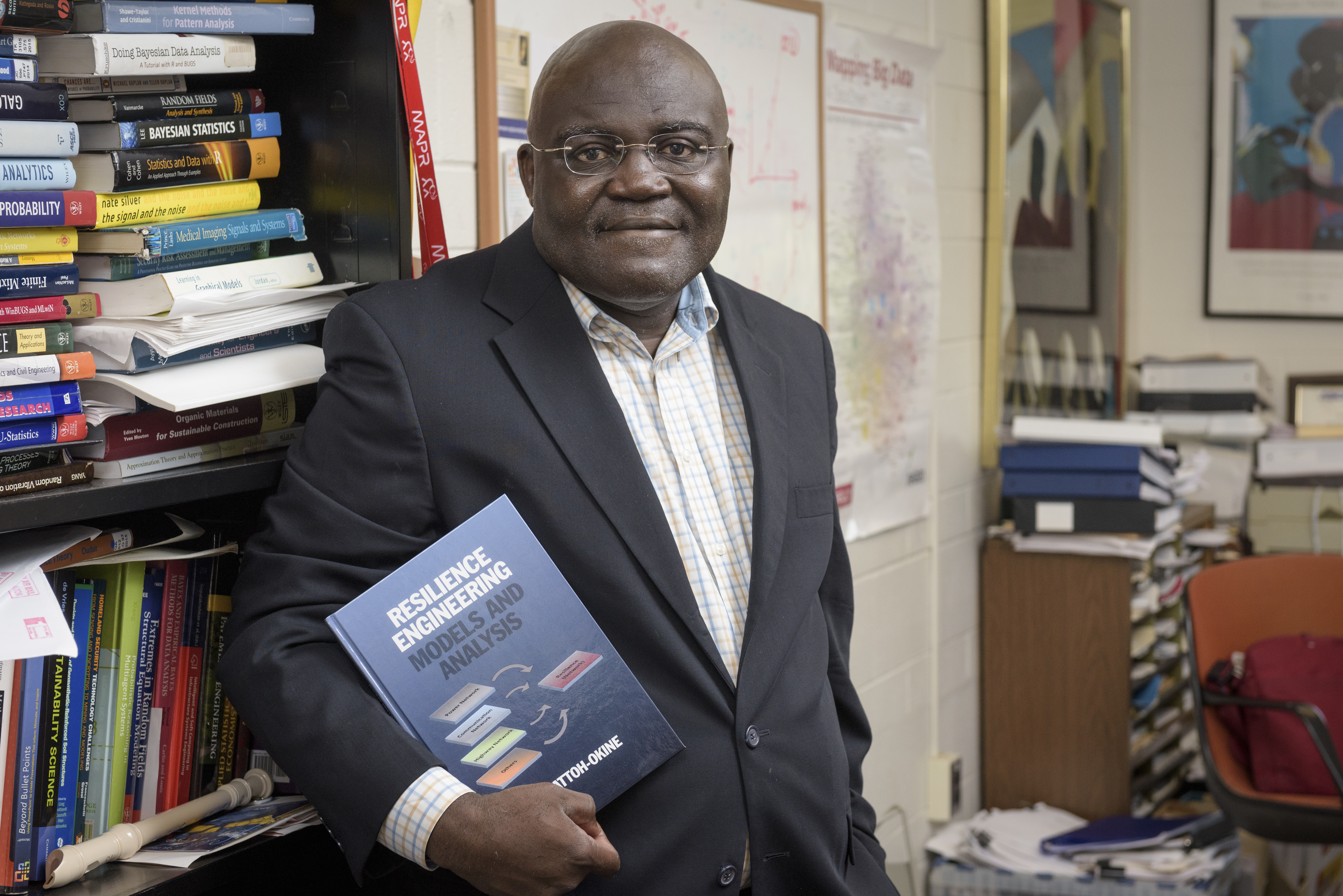Night shift
UD undergraduate studying nocturnal forest animals for Harvard internship
9:38 a.m., July 19, 2013--Not every student spends his summer nights setting up traps to catch small animals in the woods, but for University of Delaware undergraduate James Leitner, this is just a part of his internship at the Harvard Forest Summer Research Program.
“I like being able to go out alone,” said Leitner, an environmental studies major in UD’s College of Earth, Ocean, and Environment. “It’s given me a good feel for what it’s like to work in the field by myself.”
People Stories
'Resilience Engineering'
Reviresco June run
Leitner is working on answering how declining hemlock forests affect small mammal, lizard and insect abundance and foraging behavior. He is helping with three studies as part of a team consisting of two doctoral students and Aaron Ellison, senior ecologist at Harvard Forest, which is located in Petersham, Mass., and managed by Harvard University.
In one project, Leitner studies small rodents like mice, shrews, voles and flying squirrels, which are nocturnal and only come out for food at night — so that’s when he has to set up his traps to catch them. The traps are small and do not hurt the animals, and after one is caught, Leitner records its weight, maturity and whether it has been caught before.
Additionally, he is studying the effects of hemlock removal on the populations of newts and salamanders. Leitner catches these amphibians by laying wide wood boards in eight plots because they like cold, damp and woody areas. Once he finds the salamanders and newts, he records the sex, length, species and reproductive status.
Leitner’s work with Ellison explores how hemlock destruction is affecting ants, spiders and beetles. They use around 50 pitfall traps, or little cups that they place in holes dug in the ground. These traps are checked once a month and they take the insects back to a lab where they separate what they caught, record the species and note other details.
“We use really, really strong microscopes to look at them and you can literally see every detail of the spiders,” Leitner said. “It’s creepy.”
The Eastern hemlock population is in rapid decline due to two main problems, the lumber industry and an invasive insect called the hemlock woolley adelgid. Hemlock trees are an excellent source of timber because they are massive trees that grow over 100 feet tall, and they are being logged at an unsustainable rate. Then there are the hemlock woolley adelgids, which appear like little white dots, and suck the nutrients out of tree. Within 5 to 15 years, the woolley adelgid can deplete an entire tree and cause it to fall to the forest floor.
This is where Leitner’s research comes in. Since hemlocks are so big, they block the sun from reaching the forest floor, creating a cool microenvironment where smaller plants, mammals and insects thrive. What Leitner does is monitor the populations of these animals to see if there is a variation in the abundance of species under live Eastern hemlocks compared to environments where the hemlocks have fallen or been cut down.
The researchers have noticed a biodiversity increase in the areas with fewer hemlock trees, which raises the question of which is more important: biodiversity or the Eastern hemlock?
The Harvard Forest Research Program is an 11-week program that runs from June 5 to Aug. 2, and Leitner is one of 28 students who were accepted out of 600. Every Monday and Wednesday, Leitner attends seminars where experts and professionals give talks on a variety of different topics. He said it’s really shown him what he could do around the world, and that he would love to do research the rest of his life.
Aside from the Harvard Research Program, Leitner has another big project on his mind. At the University of Delaware, he is the president of the Water Project. This organization raises money to provide clean water to different underprivileged nations. They currently are involved in a project to provide water to Rorya, a village in Tanzania. He said they hope to begin over Winter Session, and that they will be responsible for finding a water table, getting engineers to access the water and teaching the village how to maintain the access point.
For now though, Leitner said he can’t wait for August, when he can go home, relax, and hopefully guide a few tours through UD’s campus as a Blue Hen Ambassador.
Article by Andrew Cooper






